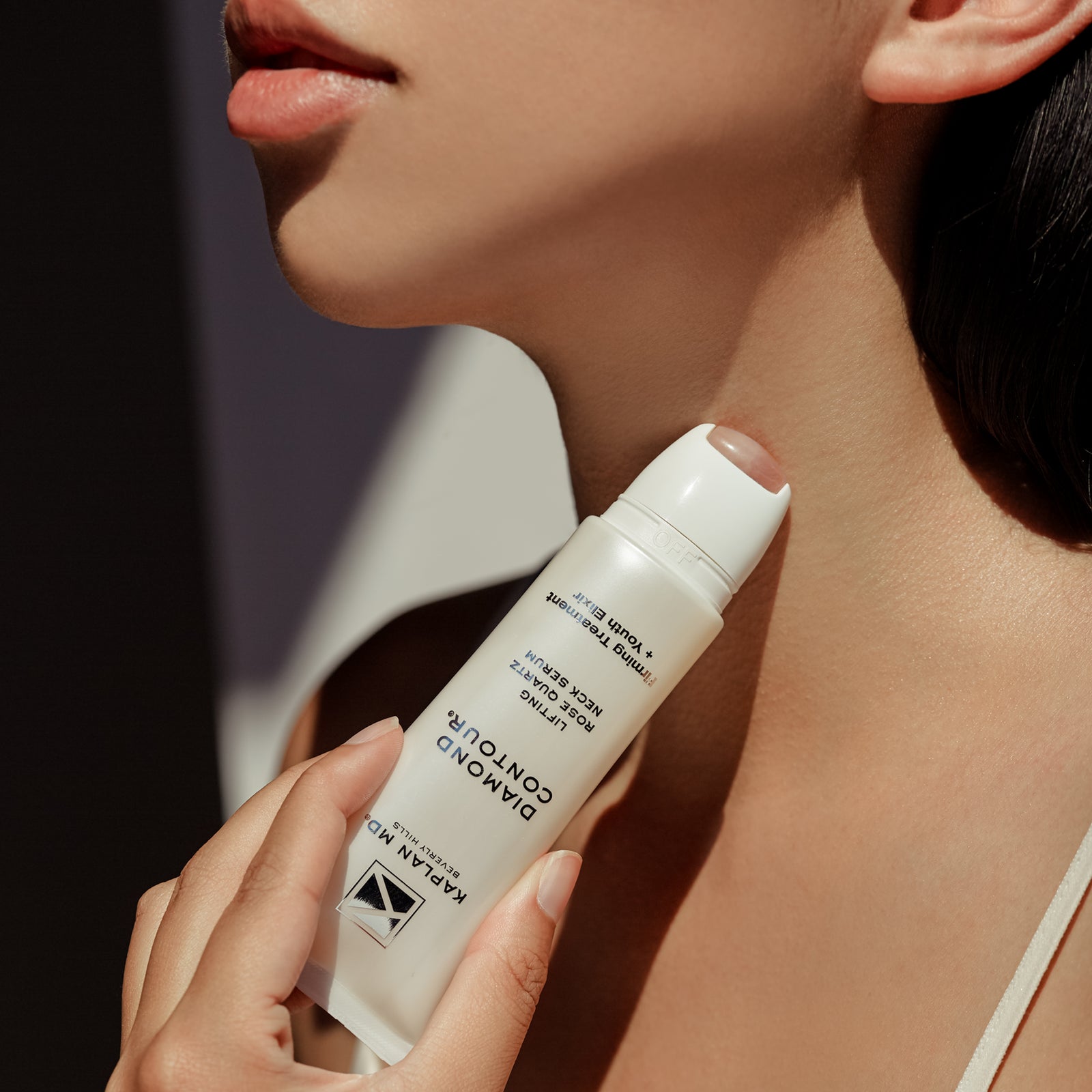Dr. Kaplan – Squamous Cell Carcinoma
SQUAMOUS CELL CARCINOMA
If you’ve been diagnosed with squamous cell carcinoma (SCC) you are not alone. SCC is the second most common form of skin cancer. Each year, millions of cases are diagnosed. When found early, SCC can be cured with treatment.
WHAT SCC LOOKS LIKE
SCC appears on the skin in many shapes. You may see a:
- Bump that feels crusty or rough
- Flat patch that is red and rough
- Dome-shaped bump that grows and bleeds
- Sore that does not heal, or heals and returns
Most SCCs develop on skin that gets sun exposure, such as the face, ears, lips, back of the hands, arms, and legs. SCC also can develop on areas of the body that do not get sun, such as inside the mouth or on the genitals.
Some SCCS begin in a precancerous growth called an actinic keratosis or AK. Most AKs share common qualities such as being dry, scaly, and rough textured. A single AK may range from the size of a pinhead to larger than a quarter.
ANYONE CAN GET BCC
People of all skin colors get SCC although it is more common in Caucasians. When the sun’s ultraviolet (UV) rays can penetrate the skin when we go outside during the day without sun protection. UV rays also penetrate the skin when a person uses a tanning bed or other indoor tanning device. You also are expose to UV ray through the window panes of your car and buildings. As this damage accumulates, the risk of developing skin cancer increases.The risk increases with age because with time, the skin naturally has more exposure to the sun’s ultraviolet (UV) rays.
Your risk of developing SCC increases if you have any of the following factors:
YOUR PHYSICAL TRAITS
- Pale or light-colored skin
- Blue, green, or gray eyes
- Blond or red hair
- An inability to tan
WHAT YOU’VE DONE
- Spent a lot of time outdoors, for work or leisure, without using sunscreen or covering up with clothing
- Used tanning beds or sunlamps
- Been exposed to cancer-causing chemicals (e.g. arsenic in drinking water, tar, worked with some insecticides or herbicides)
- Smoked tobacco
- Spent lots of time near heat, such as a fire
YOUR MEDICAL HISTORY
- Diagnosed with actinic keratoses (AKs)
- Badly burned your skin
- Have an ulcer or sore on your skin that has been there for many months or years
- Taking medicine that suppresses your immune system
- Received an organ transplant
- Infected with human papillomavirus (HPV)
- Received many x-rays, such as patients who received x-ray treatments for acne in the 1940s
- Had many PUVA treatments
- Have one of these medical conditions: xeroderma pigmentosum, epidermolysis bullous, or albinism
SCC IS CURABLE
When caught early and removed, SCC usually can be cured. Left untreated, SCC can spread to other parts of the body, making treatment difficult.Proper treatment begins with the right diagnosis. To diagnose SCC, a dermatologist performs a skin biopsy. This is the only way to diagnose any type of skin cancer, including SCC. Your dermatologist can perform a biopsy using local anesthesia during an office visit.
To perform a biopsy, your dermatologist will remove the entire growth (or a part of it) that might be an SCC. This growth will be examined under a microscope.
If the diagnosis is SCC, your dermatologist will consider many factors to determine the best treatment for you, including where the SCC appears on your body, if the SCC has spread to another part of your body, and your overall health.
SQUAMOUS CELL CARNCINOMA
Treatment for SCC involves having one or more of the following:
EXCISION
This is a surgical procedure. Your dermatologist can perform this procedure during an office visit using local anesthesia. Excision involves removing the SCC and some normal-looking skin around it.
What your dermatologist removes will be examined under a microscope. If the normal-looking skin contains cancer cells, you will need more treatment.
MOHS MICROGRAPHIC SURGERY
Mohs is usually performed in a medical office under local anesthesia while you remain awake. During the surgery, the surgeon first removes the SCC and some normal-looking surrounding skin around and below it.
While you wait, the surgeon uses a microscope to look at what was removed. If the surgeon sees cancer cells, he or she will continue to remove very small amounts of skin and look at each layer of skin under the microscope. This process continues until the surgeon no longer sees cancer cells.
ELECTRODESICCATION & CURETTAGE
This treatment removes the cancer by first scraping (curetting) the growth from the skin and then heating the treated area to destroy any remaining cancer cells.
PHOTODYNAMIC THERAPY (PDT)
This treatment uses light to remove some very early skin cancers. PDT is a two-step process. First, a chemical is applied to the skin. The chemical remains on the skin for some time so that it can be absorbed. Then the skin is exposed to special light to kill the cancer cells.
LASER TREATMENT
Lasers can be used to remove an SCC that sits on the surface of the skin. This treatment is only recommended for early SCCs.
RADIATION
When a patient cannot undergo surgery to remove the cancer, radiation therapy may be recommended. A series of radiation treatments are usd to destroy the cancer cells.
MEDICINE APPLIED TO THE SKIN
When SCC is caught early, a dermatologist may prescribe medicine that you will apply to your skin at home.
CHEMOPREVENTION
If you have a condition that causes you to develop many SCCs, an oral medication me be prescribed that can reduce the likelihood of developing future SCCS.
SCC INCREASES RISK FOR ANOTHER SKIN CANCER
Studies show that people who get skin cancer have a greater risk of developing another skin cancer. The following can help you detect and prevent new skin cancers: Keep all appointments with your dermatologist. Even melanoma, the form of skin cancer, has a very high cure rate when found early and treated.
Perform skin self-examinations. Examine your skill as often as your dermatologist recommends. Be sure to check your scalp, ears, genitals, and buttocks.
If you notice anything on your skin that is changing, growing, or bleeding, immediately make an appointment to see your dermatologist. Tell the person who schedules the appointment why you want to see your dermatologist.
BCC INCREASES RISK FOR ANOTHER SKIN CANCER
Studies show that people who get skin cancer have a greater risk of developing another skin cancer. The following can help you detect and prevent new skin cancers: Keep all appointments with your dermatologist. Even melanoma, the form of skin cancer, has a very high cure rate when found early and treated.
Perform skin self-examinations. Examine your skill as often as your dermatologist recommends. Be sure to check your scalp, ears, genitals, and buttocks.
If you notice anything on your skin that is changing, growing, or bleeding, immediately make an appointment to see your dermatologist. Tell the person who schedules the appointment why you want to see your dermatologist.
Protect your skin every day by:
- Generously applying sunscreen that offers broad-spectrum. (UVA and UVB) protection, water-resistance, and a Pun protection Factor (SPF) of 30 or more.
- Wearing protective clothing. This means wearing a long-sleeved shirt, pants, a wide brimmed hat, and sunglasses when possible.
- Seeking shade. Shade helps protect your skin from the sun’s harmful rays. Shade is especially important between 10 a.m. and 2 p.m. when the sun’s rays are strongest. But any time your shadow is shorter than you are, seek shade.
- Protect your skin when around water, snow, and sand. These reflect and intensify the damaging rays of the sun.
- Never use a tanning bed. UV light from the sun and tanning beds can nausea skin cancer and wrinkling. If you want to look tan, consider using s self-tanning product or spray. Even when using one of these products, you need to use sunscreen.
- Use condoms. Your dermatologist may recommend using condoms. This can prevent an HPV infection, which reduces the risk for getting on the genitals.
- Limit the amount of alcohol you drink and do not smoke. Smoking tobacco and drinking alcohol can increase your risk of getting SCC in your mouth.
All content solely developed by the American Academy of Dermatology.








